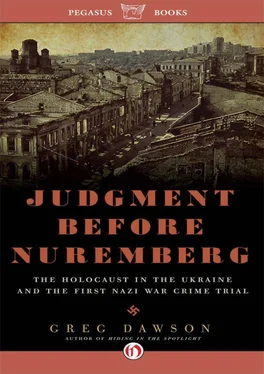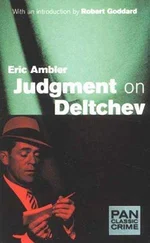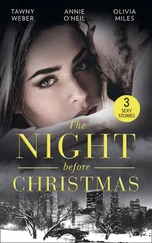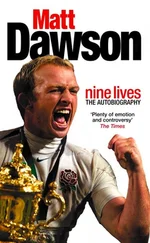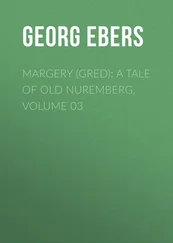I admit I did feel a twinge of guilt when reading reviews suggesting that the vengeance gleefully wreaked on Hitler and other Nazis with guns, knives, and baseball bats, as only Tarantino can, was moral pornography—that it made Jewish-American avengers, such as Mr. Louisville Slugger (my nickname for one character), no better than the Nazis themselves. “Tarantino indulges this taste for vengeful violence by, well, turning Jews into Nazis,” wrote author and critic Daniel Mendelsohn.
Having indulged so heartily in Tarantino’s all-you-can-watch revenge buffet, had I, well, turned into a Nazi? This crisis of conscience did not last long. Soon I was rooting for a Nazi to win an Academy Award. Okay, so technically I was rooting for an actor playing a Nazi, but Christoph Waltz did win for his mesmerizing portrayal of SS Colonel Hans Landa, a charming, sophisticated, cold-blooded executioner. David Denby of The New Yorker praised Waltz but still slammed the movie. “The film is skillfully made, but it’s too silly to be enjoyed, even as a joke.”
I don’t know what to call Inglourious Basterds —all Tarantino’s work defies categorization—but it is no joke. It’s a very serious movie in satirical garb. You can’t watch Basterds, in particular the brilliant colloquies between Col. Landa and whoever is sitting across the table, and not wonder on some level about the anatomy of good and evil. When you leave the theater, Col. Landa and his cold stare and smirk leave with you. This is more than can be said for most non-fiction on the subject.
Basic “awareness” of the Holocaust is at an all-time high, but so is the number of Holocaust deniers, who have discovered in the Internet the ideal delivery vehicle for their vile fantasies. Survivors, scholars, and journalists rebut the fantasies with fact, as well they should. Holocaust fact is, indeed, stranger than fiction. But at some point the sheer quantity of facts, the magnitude of the Nazis’ crimes becomes unfathomable, like a federal debt of a trillion dollars. The mind can’t compute the number and eventually shuts down and refuses to accept more data.
“Just the facts, ma’am” was fine for Det. Jack Webb investigating bank robberies on Dragnet. The Holocaust, not so much. Art—high and low—can reach people in places and at depths inaccessible to simple fact, no matter how compellingly presented.
In Life Is Beautiful , another fantasy, a Jewish Italian father persuades his young son that their life in a Nazi concentration camp is just a big game staged for his amusement—a leap of imagination too great for some critics who were not amused and dismissed the movie as a forgettable trifle. Roberto Benigni won Academy Awards for actor and screenplay, leaping and climbing over seats to reach the stage to get his Oscars. I’ve never forgotten Benigni’s leap of imagination—or the eyes of the little boy as American tanks rumble into the liberated camp—while the estimable but linear and didactic Schindler’s List has faded to a mental footnote.
One reason I feel so strongly about the need for fantasy to supplement and animate fact, to expand the boundaries of imagination, is that I see the need in myself. In August 1943, U.S. Supreme Court Justice Felix Frankfurter was in a group of American dignitaries who met with Jan Karski, a Pole who provided graphic descriptions of what he had seen in the Warsaw ghetto and Belzec death camp. “I know what you say is true,” Frankfurter said, “I just don’t believe it.” Nearly seventy years later, I found myself suffering the same failure of imagination—at the very scene of the crime, no less.
It happened at the Chichikov Hotel in Kharkov, where I met for tea and conversation with Victor Melikhov, the English instructor and amateur historian who gave me a two-hour crash course on the sprawling arabesque that is Russian-Ukrainian history. He began with a pithy truism from Russian writer-satirist Mikhail Zadornov: “Russia is a great country with an unpredictable past.” My inability to make the leap of imagination came near the end of the tutorial when, in the most casual way, Victor said something astonishing. In the town of Artyomovsk in southeastern Ukraine, he said, the Nazis had herded thousands of Jews into wine cellars and bricked up the openings, leaving them to die the slowest death possible—by suffocation.
I knew that what Victor said must be true—I just didn’t believe it.
I had read and heard countless stories of Nazi atrocities in Ukraine, including the shooting and bayoneting of babies. But there was something so medieval, so theatrically sadistic about entombing people in a cave with bricks—even for Nazis—that it just wouldn’t register as real in my brain.
Back home in Orlando, still in disbelief and expecting little, I Googled “Artyomovsk” and “wine cellars” and “Nazis.” Not much popped up—but just enough: a wine lover’s blog featuring Artyomovsk Winery. I had to scroll down past many photos of wine bottles, arched tunnels lined with colorful murals, stainless steel vats, rooms full of wine, more tunnels, more vats, more racks of wine, and the winery cat prowling the tunnels, before finally finding this entry under the heading, “The weeping wall—memorial to a massacre.”
“The Artyomovsk underground quarry was the scene of a particularly horrible mass murder during World War II. The Germans arrived in the town in October 1941 and drove more than 3,000 people believed to be Jews to the underground, bricking them in alive in one of the galleries (tunnels) after taking their belongings. The Soviet Army liberated the area in September 1943 and a memorial was later built at the entry of the gallery where the crime took place. The ‘weeping wall’ is the name of the memorial and it happens to be the only place in the underground mine where some water comes out in tiny drops from the wall. It is said that these water drops are the tears of the victims. After this solemn meditation in front of this wall, the visitors are invited to a more cheerful experience—tasting of several wines.”
Above the blog entry was a photo of the quite beautiful memorial: a white brick wall maybe thirty feet long and twelve feet high with cut-outs for tall candles, and in the center, a jagged opening and two mournful, bowed figures carved in white stone. I now “believed” what Victor told me, but I still could not feel it—the enormity of such an act. Was there an inscription on the Weeping Wall? The blogger did not say. There is no mention of the memorial on the Artyomovsk Winery Web site, or on a tourism Web site for Donetsk, the largest nearby city, though it does hail the winery as “our national pride… the largest East European facility producing exquisite bottled sparkling wines.” It seems that sparkling wine does not go well with the Holocaust.
After much online surfing and trawling, I was able to find a bit more information. There were gypsum mines and an alabaster plant at Artyomovsk when the Germans arrived in 1941 and decided that the tunnels, 230 feet below the surface, would make an excellent living grave for the Jews of the town. After the war, the Stalin government converted the mines to a massive wine-storage facility, and erected the Weeping Wall memorial. Artyomovsk Winery was established in 1950 and now holds 30 million bottles of wine. None of these facts gave me any sense, any visceral knowledge, of what occurred at Artyomovsk in October 1941—of how it was for the Jews as the Nazis entombed them brick by brick.
The only reference I had for this sort of scenario in my imagination was a dimly remembered short story from high-school lit class by Edgar Allan Poe in which a man seals an adversary in a wall with bricks. Refreshing my memory from a Poe collection on the shelf, I was startled to discover that the scenario in The Cask of Amontillado was even closer than I had recalled to the events at Artyomovsk. The narrator of Poe’s story, Montresor, encased his erstwhile friend, Fortunato, not in a wall but the wine cellar of his palazzo, luring him there with the prospect of a bottle of Amontillado, a prized sherry. He shackled the drunken Fortunato in a niche deep in the cellar among the catacombs. Reading on, I felt for the first time stirrings of the horror at Artyomovsk.
Читать дальше
